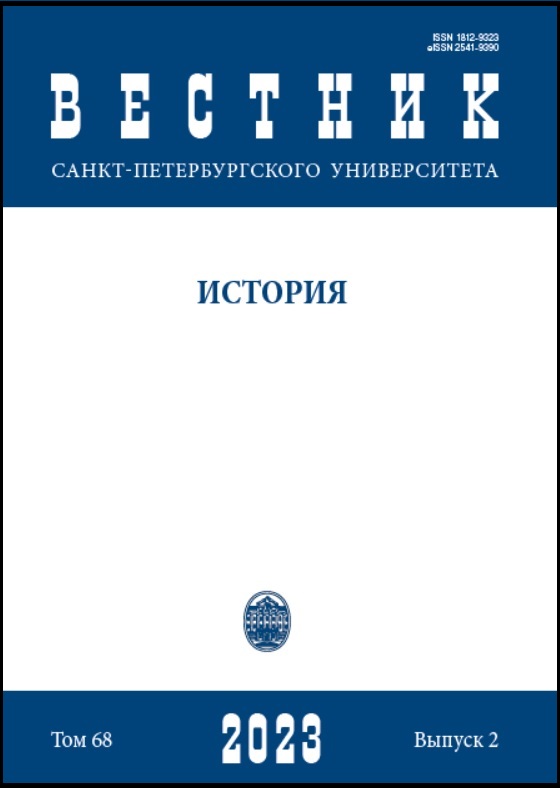Historical Memory of Dmitry Donskoy in the Pre-Petrine Period
DOI:
https://doi.org/10.21638/spbu02.2023.211Abstract
The historical memory of Dmitry Donskoy in the first centuries after his death was primarily of a secular nature. His victory in the Kulikovo field determined the public perception of his image. Even during the life of Dmitry, there was a convergence between his image and the memory of Alexander Nevsky, but the question of church glorification of a victor over Mamai was not raised. The reason lay in Dmitry’s policy of active interference in the affairs of ecclesiastical authorities. Even a large-scale canonization of Russian saints, initiated by Metropolitan Macarius, left Dmitry Donskoy out. It can again be attributed to his difficult relationship with the church authorities. However, this didn’t prevent an increasing tendency of inclusion of the image of the Grand Duke as a talented military leader and conqueror of the Horde in the historical memory of his contemporaries and in the coordinate system of the ideology of the newly created unified Russian state. Ivan Grozny considered him one of the “historical models” for his own rule and emphasized his own descent from this glorious ancestor. In the 17th century, the nobles, constructing their genealogical history, tried to connect their origins with the boyars who went to the court of Dmitry Donskoy. The emerging “connection” of the historical image of Dmitry with Alexander Nevsky, canonized at the all-Russian level in 1547, was also preserved.
Keywords:
Dmitry Donskoy, historical memory, history of the Russian Church, history of Russia, Battle of Kulikovo, canonization of saints, principality of Moscow
Downloads
References
Downloads
Published
How to Cite
Issue
Section
License
Articles of "Vestnik of Saint Petersburg University. History" are open access distributed under the terms of the License Agreement with Saint Petersburg State University, which permits to the authors unrestricted distribution and self-archiving free of charge.





